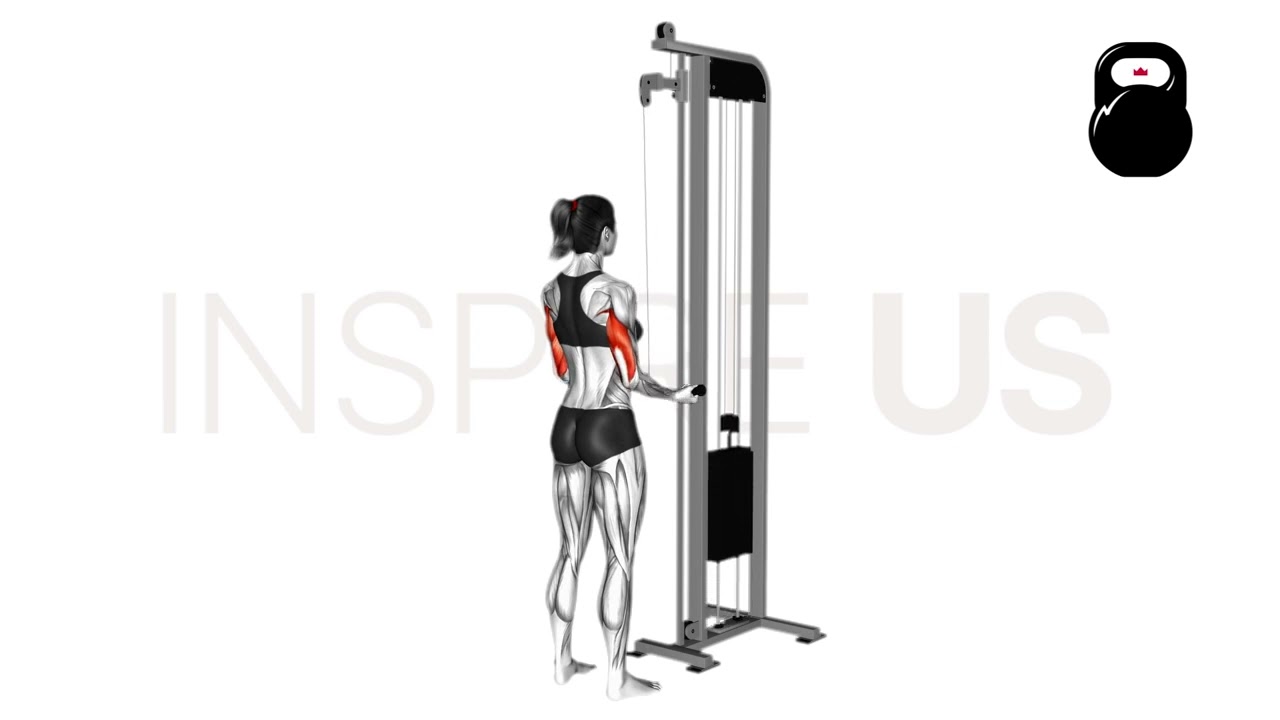Underhand Tricep Pushdown: Benefits, Muscles Worked, and More
Also referred to as reverse grip tricep pushdowns - the underhand tricep pushdown is a unique take on what is a classic cable isolation exercise.
Lifters will often perform this normally overhand exercise with a supinated grip for its benefits relating to proper form adherence and slightly greater recruitment of the triceps themselves.
But before you throw this excellent triceps builder into your workout, it’s important to fully understand what makes it so effective. In this article, we will discuss not only its benefits and proper form, but also a few common mistakes you should steer clear of.
What are Underhand Triceps Pushdowns?
Performing tricep pushdowns with an underhand grip does not change its technical aspects - meaning that despite a different grip, it is still a single-joint isolation exercise performed for building triceps muscle mass.
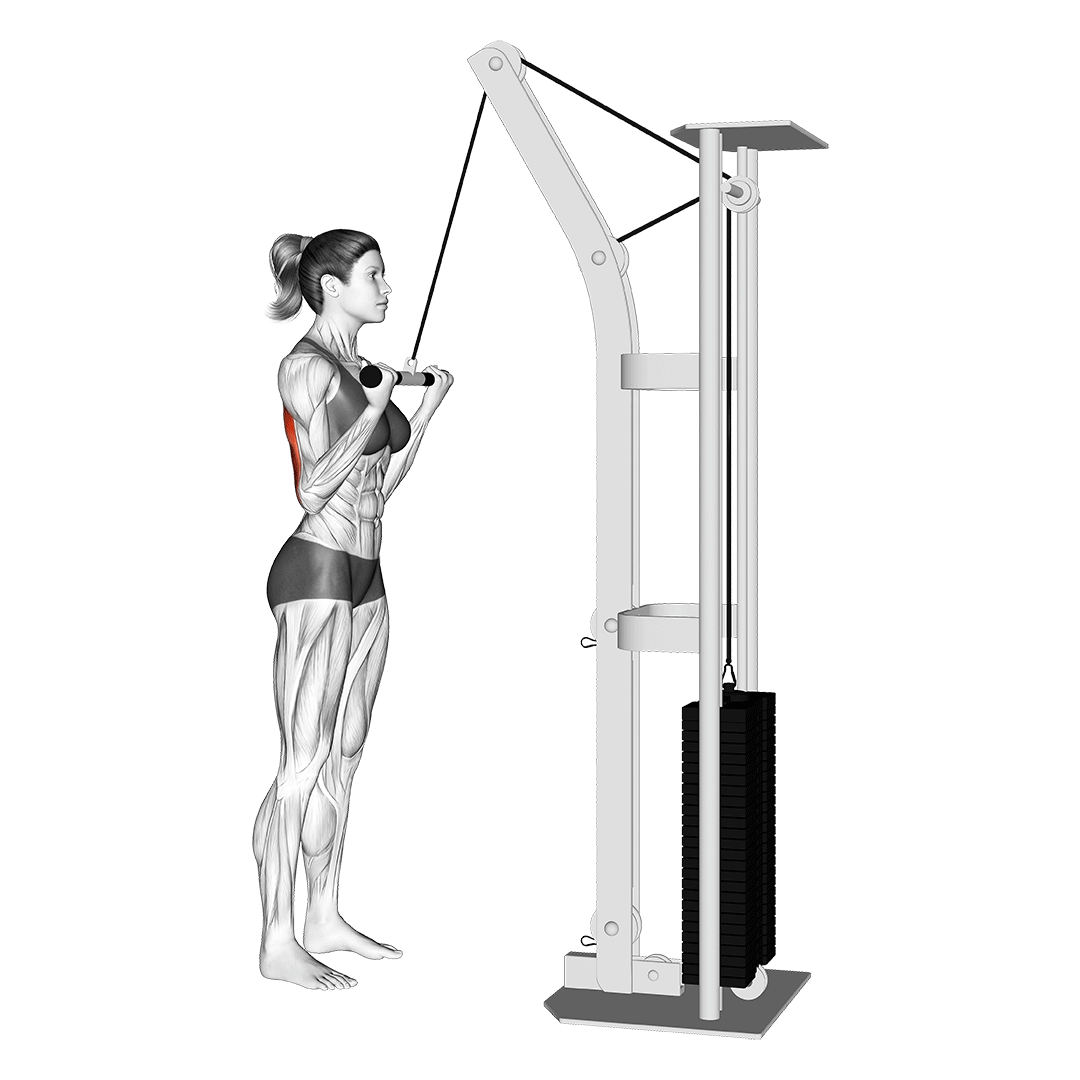
Tricep pushdowns are characterized by significant use of tricep extension against vertical resistance while in a standing or seated position.
Often, the torso will be leaned forwards slightly so as to create a more advantageous position for the triceps and reduce any risk of cheating by swinging the upper body.
Regardless of grip used, tricep pushdowns are most often programmed for high volume sets and a moderate level of resistance. Of course, a cable machine and handle capable of allowing for an underhand grip will be needed for performing this specific variation.
Is the Underhand Triceps Pushdown the Right Exercise for You?
Overall, the underhand triceps pushdown is quite safe and can be performed by all healthy individuals.
Those seeking greater triceps mass in an isolated and low-impact manner can fully take advantage of the underhand triceps pushdown with little risk of injury.
However, those with a history of elbow injuries or bicep tears should avoid this exercise as it may cause irritation and a resurgence of symptoms.
How to do an Underhand Triceps Pushdown
To perform a repetition of the underhand triceps pushdown, the lifter will begin by gripping a cable bar attachment in an underhand grip, hands set around shoulder-width apart. The pulley itself should be slightly overhead for the optimal cable angle.
The feet should be set far enough apart to maintain balance as the torso is angled slightly forwards, scapula retracted and shoulders squared.
From this stance, the lifter then squeezes their triceps and pins their elbows to the sides of the torso as they push the bar straight downwards.
The biceps should be contracted as minimally as possible, with the triceps themselves being responsible for most of the force involved.
Once the elbows are fully extended beneath the body, the lifter slowly releases the tension in their triceps - allowing the resistance of the cable to pull their forearms back up. The elbows should remain pressed against the sides as this occurs.
With the handle returned to its original position, the repetition is now considered to be complete.
What Muscles do Underhand Tricep Pushdowns Work?
The underhand tricep pushdown really only targets one muscle group, if performed correctly. This, of course, is the triceps brachii located along the sides and back of the upper arm.
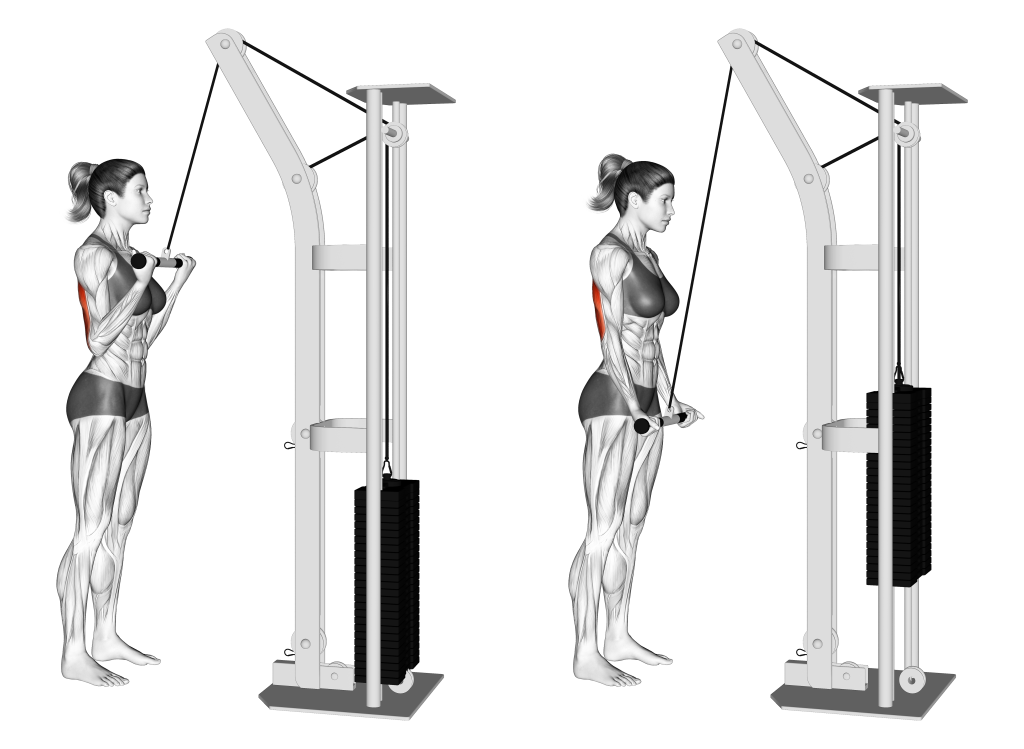
Among the three heads of the triceps brachii, the medial and lateral heads play the most significant role. As such, they also receive the most benefit from the exercise.
In comparison to conventional (overhand) tricep pushdowns, somewhat greater recruitment of the medial and long head is indeed present - but it is largely the lateral and medial that are targeted the most.
What are the Benefits of Doing Underhand Tricep Pushdowns?
Underhand tricep pushdowns are performed over other tricep exercises so as to achieve the following benefits.
Excellent for Building Triceps Mass
Like all other forms of tricep pushdown, the underhand variation is characterized by its effectiveness at building muscle mass in the triceps themselves.
When programmed for high volume and a lengthy time under tension with each repetition, lifters will see significant hypertrophy in their medial and lateral tricep heads.
Reduces Risk of Poor Form or Cheating
The main benefit to performing tricep pushdowns with an underhand grip is its greater form adherence. With the wrists supinated, there is an easier time maintaining correcting positioning of the elbows throughout the entire range of motion.
Furthermore, holding the handle in this manner helps prevent the lifter unconsciously “cheating” the repetition by pressing it downwards with the use of their entire torso. This can take the form of further bending at the waist, internally rotating the shoulders or even shifting forwards at the hips.
Greater form adherence means that lifters can reasonably take their exertion to a greater level without necessarily increasing the risk of injury or poor muscular contraction.
Greater Emphasis on Medial Head
In comparison to tricep pushdowns performed with a neutral or overhand grip, the underhand variation emphasizes the medial head of the triceps themselves.
With how the majority of exercises involving the triceps target the lateral or long head, targeting the medial head to a full extent is all the more important in a hypertrophy-focused routine.
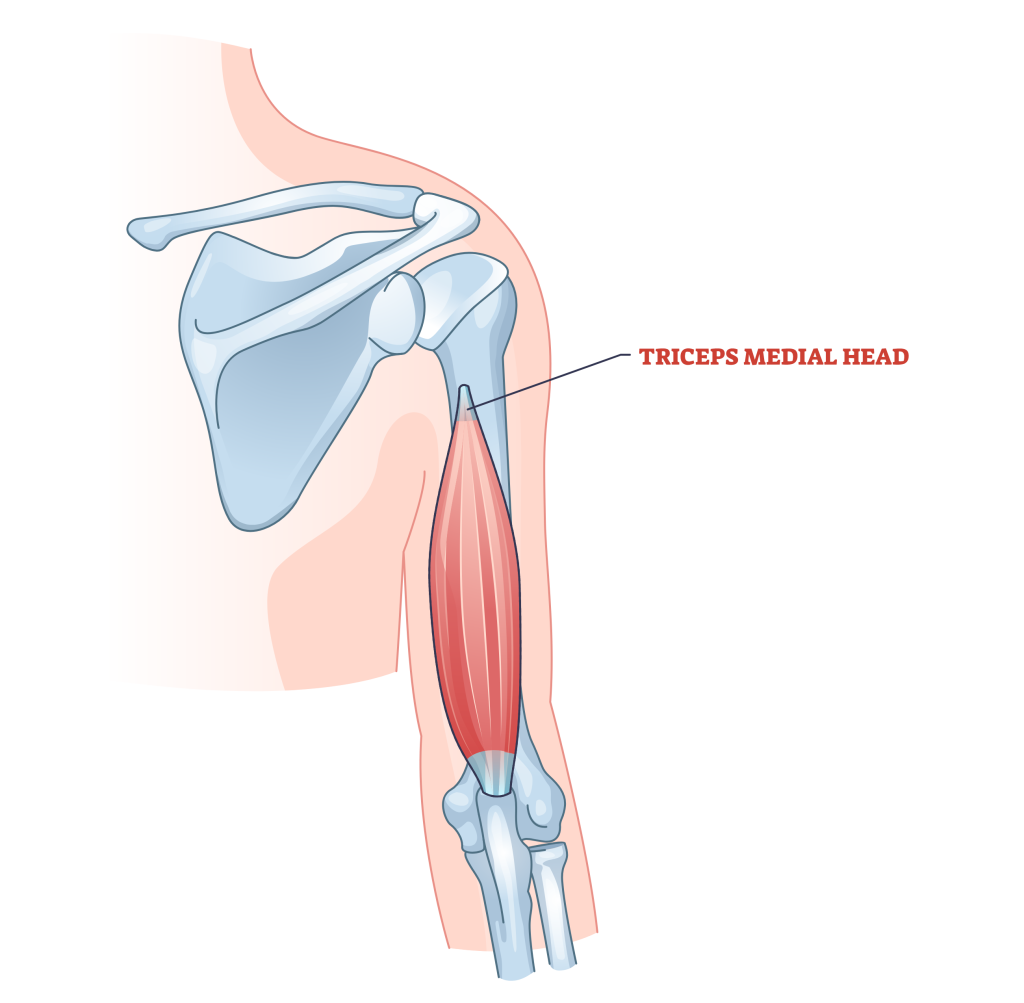
Apart from being important for improving the overall thickness of the tricep from all angles, the medial head also plays an important role in extension of the forearms at the elbows - regardless of whether resistance is present or not.
This isn’t to say that the underhand tricep pushdown isolates the medial head, only that it lends the specific muscle a greater role within the greater scope of the entire triceps muscle group itself.
For even better medial head emphasis, aim to keep the hands shoulder-width apart along the bar and focus on properly squeezing the triceps as much as possible.
Less Strain on Shoulders
Although strain on the shoulders is nonetheless minimal in other forms of tricep pushdown, it can nonetheless still be an issue for maximal exertion sets or lifters with less than optimal form.
With an underhand grip, the lifter is forced to maintain shoulder neutrality. This, in turn, reduces the risk of the shoulders rotating internally as the lifter struggles to press the bar downwards.
Often, if form breakdown occurs in this case, it will be the elbows that flare outwards due to the underhand grip involved.
To fully ensure that no strain on the shoulders occurs, the lifter should strive to partially retract their scapula. Doing so will help limit how far forwards the shoulders are able to move, and aid in properly isolating the triceps brachii muscles.
Less Resistance Needed to Reach Working Intensity
Because less involvement of other muscle groups is present, the triceps are engaged to a relatively greater degree. Acting in a more isolated manner, the triceps will need to exert themselves further to ensure the repetition is completed.
In turn, less weight is needed to reach the desired level of training intensity - reducing overall strain on the joints and further limiting any risk of injury that may occur.
Common Underhand Tricep Pressdown Mistakes to Avoid
Although the underhand tricep pressdown is quite a safe exercise, avoid the following mistakes in order to make the most of its benefits.
Contracting the Biceps
While it may be quite easy to contract the biceps due to the underhand grip involved, lifters should strive to avoid doing so as much as possible.
Not only can it lead to strain on the wrists and a greater risk of bicep tears, but much of the resistance will also be taken away from the triceps brachii - therein causing them to develop poorly in response to the exercise.
As much as possible, the biceps themselves should remain relaxed.
While this may be difficult for lifters who have trouble consciously controlling their biceps, one good cue is to slowly release tension during the upward phase of the movement, allowing the resistance of the band to pull their forearms in a controlled manner.
Curling the Wrists or Bending Them
During a repetition of underhand tricep pushdown, the wrists should remain neutrally aligned without significant flexion or extension taking place. This will help ensure that the biceps and forearm muscles are not contracted and help maintain overall proper form.
Likewise, allowing the wrists to bend inwards as the movement is being performed could indicate a grip width that is far too narrow - or that the forearm muscles are being unnecessarily recruited in the movement.
Detaching the Elbows
One of the most important parts of performing a tricep pushdown is elbow positioning.
Lifters should pay close attention to their elbows throughout the movement. Moving them forwards, backwards or flaring them out to the sides can indicate that the triceps themselves are not being worked correctly, and that the overall form of the exercise may be lacking.
Furthermore, being unable to complete a tricep pushdown without moving the elbows can also be a sign that too much weight is being lifted.
Regardless of the actual cause, the elbows themselves should remain in relatively the same place as each repetition is performed.
Horizontal Torso Angle
Although some level of tilt to the upper body is needed to perform the tricep pushdown correctly, avoid leaning forwards to an excessive degree as this can make engaging the triceps difficult.
If you find that you are having difficulty performing the pushdown without leaning far forwards, it could be a sign that too much resistance is being used. Dial the weight back and aim to keep your torso angled between 30 and 40 degrees.
Flaring the Elbows
Just as how moving the elbows out of their position is poor form, so too is flaring them out to the sides during the initial phase of the repetition.
While less common with the underhand variation, flaring elbows during a tricep pushdown can indicate that the hands are too close together along the handle, or that too much weight is being lifted.
Some level of sideways bend is permissible, but if the elbows are pointing directly away from the body, the lifter’s form should be reassessed for errors.
Alternatives and Variations of the Underhand Tricep Pushdown
If the underhand tricep pushdown isn’t quite what you’re looking for, try the following alternative exercises out.
Overhand and Neutral Grip Triceps Pushdown
Though performing tricep pushdowns with an underhand grip has its own unique benefits, so too does using an overhand or neutral grip.
Use an overhand (pronated) grip if you are having difficulty preventing the involvement of your biceps, or if you wish to better target other sections of the triceps apart from the medial head.
Likewise, a neutral grip is considerably easier on the wrists and forearms, and is far easier to perform in regards to the elbows and torso angle. However, this will require a rope attachment or similar.
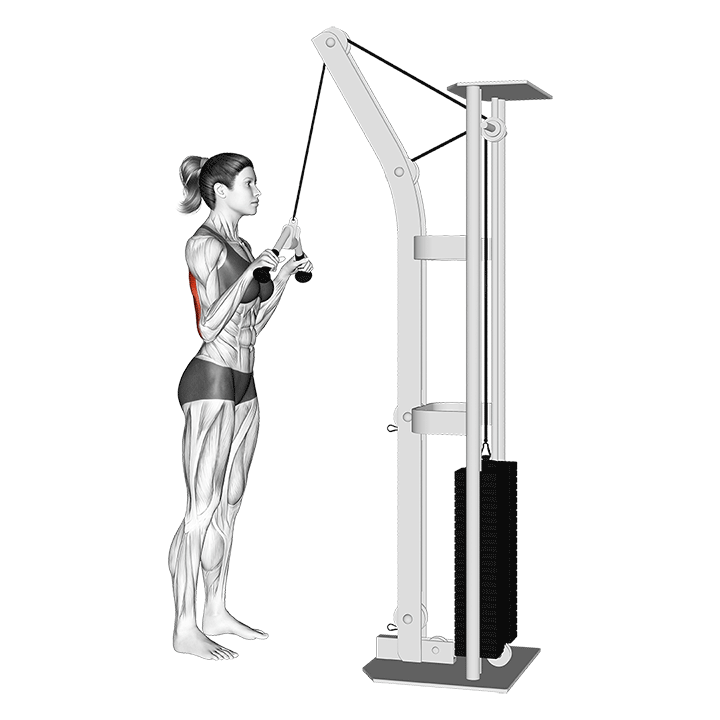
Substituting out the underhand tricep pushdown with a different variation is the easiest way of correcting issues related to the exercise without disrupting the overall flow of your program.
Overhead Cable Tricep Extensions
For a similar triceps isolation exercise with an entirely different angle of resistance, try the overhead cable tricep extension.
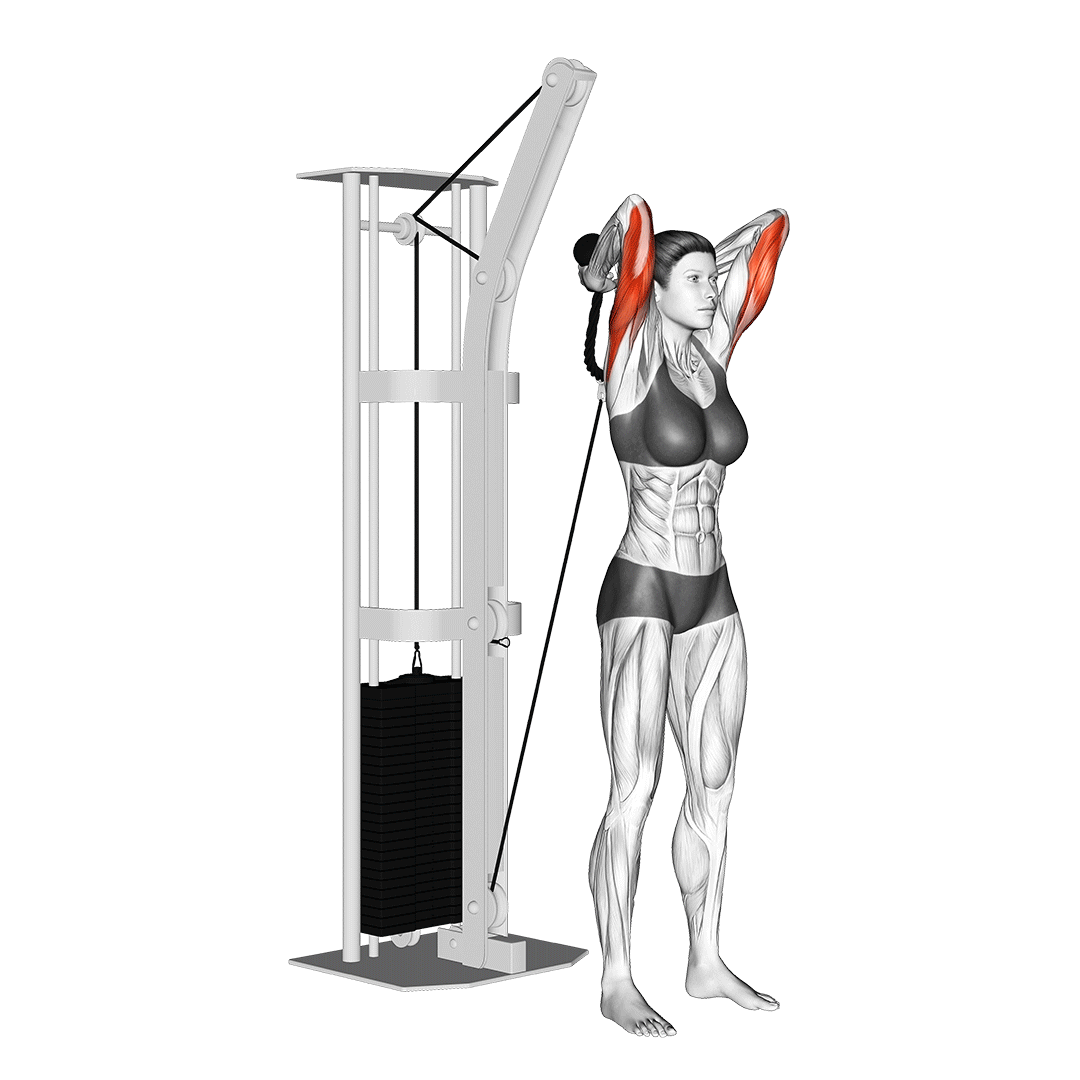
As its name implies, this particular substitute has the lifter extending their arms overhead as a cable pulls backwards from behind the body.
This creates a greater emphasis on the long head of the triceps brachii, and is overall a comparatively more intense exercise that is nonetheless used for the same purpose as tricep pushdowns.
Skullcrushers
Skullcrushers are a traditionally free weight triceps isolation exercise involving the lifter lowering a weight behind their head while in a lying position.
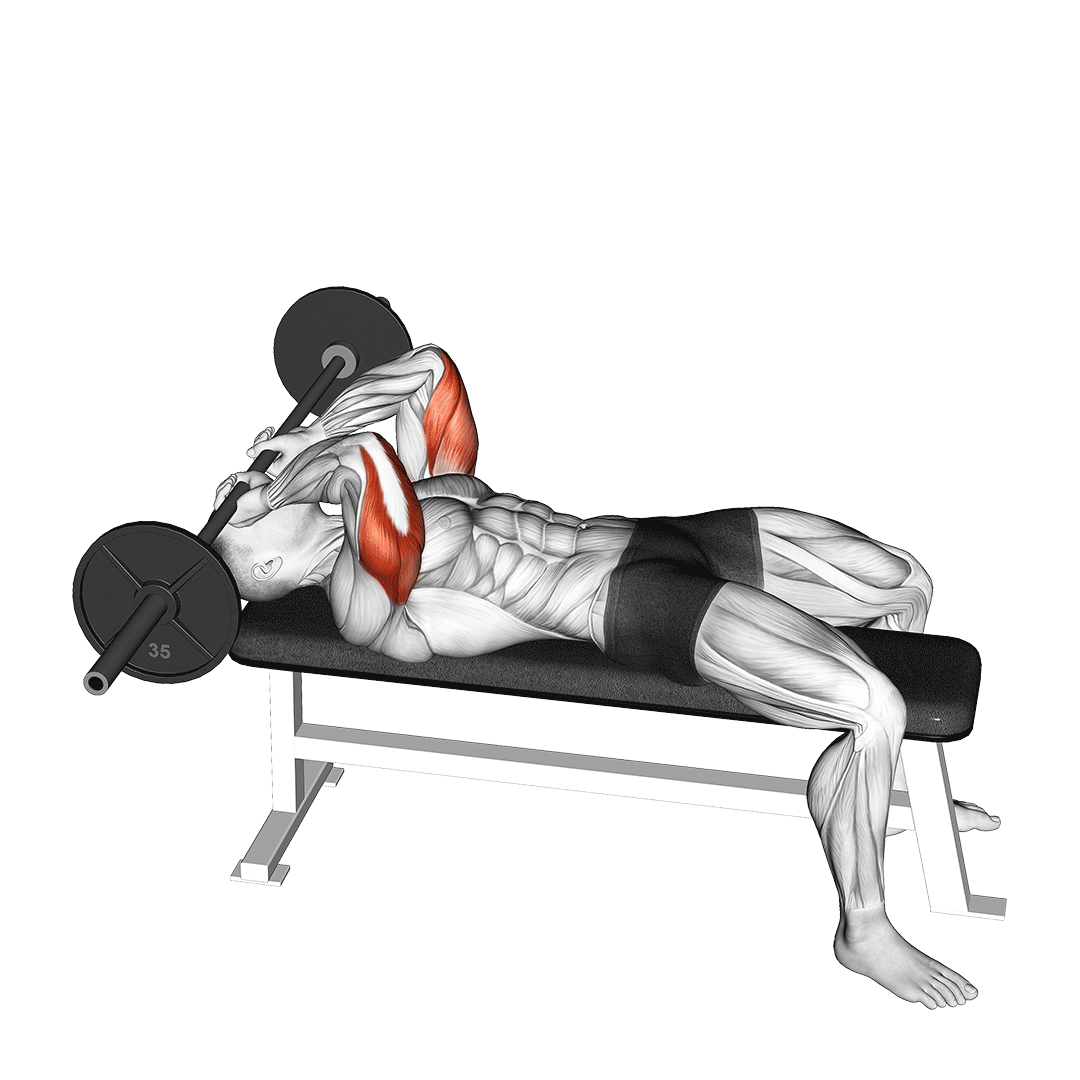
Skullcrushers are most often used as a supplementary exercise for building strength and mass in the triceps, and are considerably more intense than the tricep pushdown.
If seeking a more intense triceps workout, give skullcrushers with a barbell a try.
Frequently Asked Questions (FAQ)
Is the Underhand Tricep Pushdown Good?
Yes - performing tricep pushdowns with an underhand grip allows for an easier time maintaining proper form. Furthermore, it also ensures that your triceps are isolated to a greater degree, especially in regards to the medial head.
Is an Underhand or Overhand Triceps Pushdown Better?
Neither overhand or underhand tricep pushdowns are necessarily better than the other. Both are relatively the same exercise with only minor differences in individual tricep head recruitment and form.
Use the underhand tricep pushdown for greater medial head emphasis and an easier time with maintaining proper form. Likewise, perform the overhand variation for more lateral head emphasis and greater loading capacity.
Which Cable Handle is Best for Tricep Pushdowns?
Depending on which specific variation of tricep pushdown is being performed, using either a double rope attachment or an EZ-bar handle will be more useful. Using a straight bar can place unnecessary strain on the wrists and forearms, as well as partially limit your range of motion.
A Few Reminders
Although there is no arguing that the underhand tricep pushdown is an excellent movement, remember that it shouldn’t be the main source of triceps training in your workout.
Because of its low complexity, relatively light loading capacity and self-stabilizing nature, significant strength development is unlikely to occur.
Instead, seek to perform a heavier free weight exercise that targets the triceps alongside other muscle groups. A few good candidates are the close grip bench press, the conventional bench press or the parallel bar dip.
References
1. Hussain J, Sundaraj K, Subramaniam ID, Lam CK. Muscle Fatigue in the Three Heads of Triceps Brachii During Intensity and Speed Variations of Triceps Push-Down Exercise. Front Physiol. 2020 Feb 21;11:112. doi: 10.3389/fphys.2020.00112. PMID: 32153422; PMCID: PMC7047337.
2. Sumiaki Maeo, Yuhang Wu, Meng Huang, Hikaru Sakurai, Yuki Kusagawa, Takashi Sugiyama, Hiroaki Kanehisa & Tadao Isaka (2023) Triceps brachii hypertrophy is substantially greater after elbow extension training performed in the overhead versus neutral arm position, European Journal of Sport Science, 23:7, 1240-1250, DOI: 10.1080/17461391.2022. 2100279

